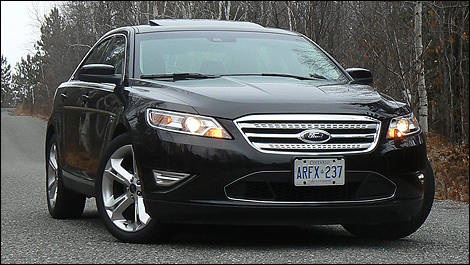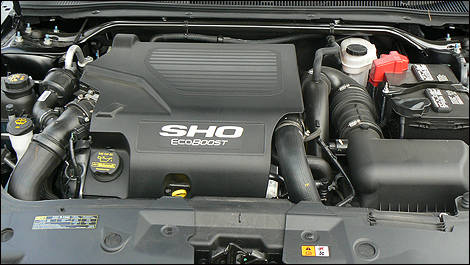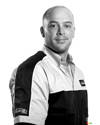Visually, the Ford Taurus SHO doesn't make much of a fuss about its twin-turbo engine, high performance goodies and ultra high-tech gadgets. Of course, enthusiasts who spot the subtle differences often crowd the car in parking lots with questions for its driver. First time passengers have numerous questions, too.
The most common are answered below.
Q: Wow, that’s the Taurus SHO! Does it boogie?
A: You bet. It’s got 365 horsepower and nearly as much torque—so it absolutely rips when drivers drop the hammer. All wheel drive is standard with the SHO, meaning there’s no traction-related drama. Just stand on the long, skinny pedal, and it sails off the line like nobody’s business.
Q: All wheel drive!? COOL! Does it do dirty four-wheel powerslides?
A: No, not really. It’s a front-biased system without a whole whack of power going to the rear wheels. In fact, SHO will even spin its front wheels and torque-steers in some situations.
Q: What's this 'EcoBoost' business all about?
A: In a nutshell, EcoBoost is how Ford is making the big V8 engine somewhat obsolete.
Basically, a smaller displacement, forced-induction V6 can put out better power numbers while using less fuel. Rather than stuffing a big V8 under the hood, engineers specified a 3.5 litre V6 with direct injection and twin intercooled turbochargers. That sounds pretty fancy—but it generates massive pulling power with notably less overall fuel consumption.
In fact, the turbocharged mid-range pull of the EcoBoost V6 at high speeds probably has an edge on most V8’s in recent memory.
Q: So, is it great on gas?
A: Relatively speaking, yes—but it’s not a Prius, either. During gentle driving and cruising, the turbochargers are typically idle, meaning drivers are only paying to feed a 3.5 litre V6.
Opened up, the turbochargers have a single job: cram as much air and fuel as possible into the engine.
 |
| The grille is aggressive, the lines are taut, the stance is tall and the entire thing is distinct from virtually any angle. |
The most common are answered below.
Q: Wow, that’s the Taurus SHO! Does it boogie?
A: You bet. It’s got 365 horsepower and nearly as much torque—so it absolutely rips when drivers drop the hammer. All wheel drive is standard with the SHO, meaning there’s no traction-related drama. Just stand on the long, skinny pedal, and it sails off the line like nobody’s business.
Q: All wheel drive!? COOL! Does it do dirty four-wheel powerslides?
A: No, not really. It’s a front-biased system without a whole whack of power going to the rear wheels. In fact, SHO will even spin its front wheels and torque-steers in some situations.
Q: What's this 'EcoBoost' business all about?
A: In a nutshell, EcoBoost is how Ford is making the big V8 engine somewhat obsolete.
Basically, a smaller displacement, forced-induction V6 can put out better power numbers while using less fuel. Rather than stuffing a big V8 under the hood, engineers specified a 3.5 litre V6 with direct injection and twin intercooled turbochargers. That sounds pretty fancy—but it generates massive pulling power with notably less overall fuel consumption.
In fact, the turbocharged mid-range pull of the EcoBoost V6 at high speeds probably has an edge on most V8’s in recent memory.
Q: So, is it great on gas?
A: Relatively speaking, yes—but it’s not a Prius, either. During gentle driving and cruising, the turbochargers are typically idle, meaning drivers are only paying to feed a 3.5 litre V6.
Opened up, the turbochargers have a single job: cram as much air and fuel as possible into the engine.
 |
| Rather than stuffing a big V8 under the hood, engineers specified a 3.5 litre V6 with direct injection and twin intercooled turbochargers. |


